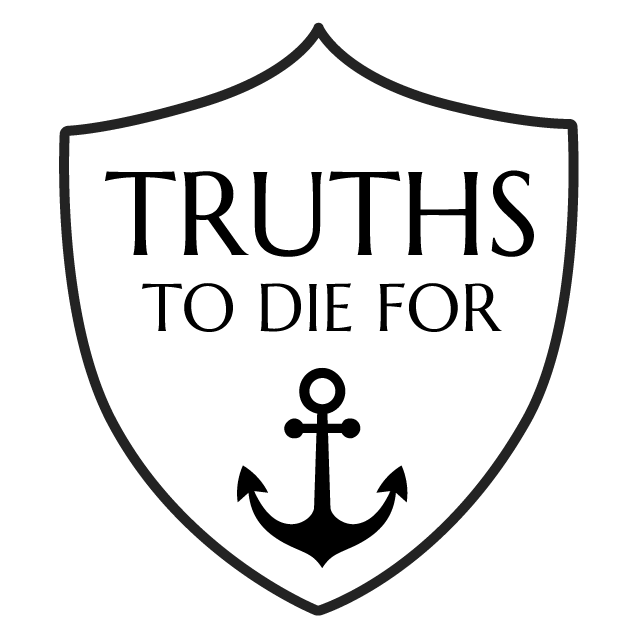Three Vital Tests to Evaluate Truth Claims
The Three-Test Filter for Truth Claims
In our pursuit of truth how can we confidently assess whether a particular claim or belief is valid or not? Philosophers and apologists often point to three key aspects or “tests” that any purported truth should be able to pass—internal coherence, external correspondence, and functional adequacy. Let’s explore each of these vital tests and see why they are important lenses that can help us evaluate truth claims:
Internal Coherence—The Test of Logical Consistency
The first hurdle any truth claim must clear is that of internal coherence or logical consistency. In other words, is the claim free of contradictions within its own principles, premises and conclusions? A logically incoherent claim is self-defeating.
Illustration: Imagine someone claimed “There are no truths”: this statement fails the internal coherence test because it contradicts itself. If there are no truths, the very statement “there are no truths” cannot be true. An inconsistent claim such as this is irrational by nature.
External Correspondence—The Test of Factual Alignment
Even if a claim is internally coherent, it must still pass the test of external correspondence by aligning with objective, empirical reality. A truth claim may be logically consistent but still fail to accurately map to facts about the physical world, observable evidence or existing knowledge.
Illustration: Someone could construct an imaginative fantasy story with internally consistent fiction rules and characters. But if this story contradicts established facts about physics, history or verifiable data, it fails the external correspondence test for truth in those areas contrary to known realities.
Functional Adequacy—The Test of Liveability
The final vital test is that of functional adequacy, asking whether a belief or truth claim can be consistently lived out and provide a coherent, flourishing framework for human existence. A truth claim may be logically consistent and align with facts, but if embracing it renders life itself incomprehensible or destructive, its truth value is greatly undermined.
Illustration: A worldview or philosophy that denies objective morality, human rights or intrinsic human value may seem internally coherent on paper. But when applied fully, it enables horrific evils, dehumanisation and social chaos that contradicts our fundamental moral intuitions and experience of human thriving. Such a view fails this test of functional adequacy.
Any robust truth claim must be able to withstand scrutiny on all three of these tests—logical consistency, factual correspondence, and real-world liveability. Running proposed truth statements through this triple filter helps expose contradictions and errors while validating genuine knowledge about reality.
As we evaluate truth claims in philosophy, science, ethics, religion and every arena of life, wisely applying these three tests can save us from falling into deception, delusion or destructive falsehoods. Prioritising internal coherence, external correspondence and functional adequacy puts us on surer footing to discern truth from fiction.
Related Reads
Editor’s Pick

Is the Birth Canal Poorly Designed? Creationist Perspectives
The human birth canal is a frequent example cited by evolutionists as evidence against intelligent design. They argue the narrow [...]

Foetal Consciousness: How New Insights Strengthen Pro-Life Position
Science and faith have often been portrayed as adversaries, but when it comes to understanding the miracle of life, they [...]

Son of David: How Scripture Confirms Jesus’ Royal Lineage
For centuries, Jewish prophecy pointed to a coming Messiah who would fulfil specific ancestral requirements. Chief among these was the [...]

To the Jew First: Why Must Missions Start With Israel?
When Paul declares in Romans 1:16, “For I am not ashamed of the gospel, for it is the power of [...]

When God Manifests in Fire: What Does the Symbolism Mean?
Throughout Scripture, God frequently reveals Himself to His people through the powerful symbol of fire. From the burning bush to [...]

The Human Knee: Where Evolution’s Kneejerk Explanations Fail
Walk, run, jump, climb, kneel, squat—all these movements depend on a remarkable piece of biological engineering: the human knee. As [...]

The Big Hoax: Turns Out ‘Junk’ DNA Isn’t Junk After All
For decades, evolutionary scientists dismissed vast stretches of our DNA as useless “junk”—leftover evolutionary baggage with no purpose. This concept [...]

Can We Trust John’s Gospel? Answering Your Toughest Challenges
John’s Gospel is distinct among the four biblical accounts of Jesus’ life. With its profound theological language, extended discourses, and [...]

Resurrection Hope: Why Joseph Requested Burial in Canaan
In the closing scenes of Genesis, we find a remarkable request. Joseph—vizier of Egypt, saviour of his family, reconciler of [...]

Haemoglobin Screams Design: A Miracle in Every Breath
Billions of molecular miracles occur inside our bodies each moment. Haemoglobin—the remarkable protein responsible for every breath we take—executes a [...]


